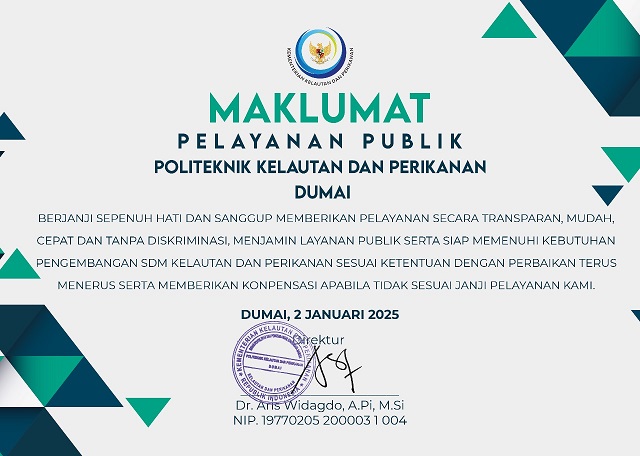ANALYSIS OF ALUMINUM SAND CASTING OF A THREE-BLADED PROPELLER FOR FISHING BOATS WITH A DIRECT GATING SYSTEM
Abstract
Keywords
Full Text:
PDFReferences
Akhyar, I., Hasanuddin, M., Ibrahim, A., Farhan, Z., & Jalil, Z. (2022). Evaluation Of Cast Defects in Ship Propeller of Recycled Aluminum Alloy. Metalurgija, 61(2), 309-312.
Campbell, J. (2015). Complete casting handbook: Metal casting processes, metallurgy, techniques and design (Second Edition, pp. 1-1028).
Chakravarti, S., & Sen, S. (2023). An investigation on the solidification and porosity prediction in aluminium casting process. J. Eng. Appl. Sci., 70(21).
Chen, Z., Li, Y., Zhao, F., Li, S., & Zhang, J. (2022). Progress in numerical simulation of casting process. Measurement and Control, 55, 257-264.
Choudhari, C. M., Narkhede, B. E., & Mahajan, S. E. (2014). Casting Design and Simulation of Cover Plate using AutoCAST-X Software for Defect Minimization with Experimental Validation. Procedia Materials Science, 6, 786-797.
Endrawan, T., Dionisius, F., Sifa, A., & Kusuma., B. H. (2019). Analisis Perbedaan Tinggi Sprue Pada Top Gating System Untuk Pengecoran Propeller Yang Bermaterial Paduan Alumunium Dari Limbah Propeller Perahu. Prosiding Industrial Research Workshop and National Seminar, 28-35.
European Standard EN 1706. Equivalent Standards for Die Casting: USA AA 383.0 Japan JIS ADC12Z.Properties originally computed with Computherm/Scheil method.
Ezanno, A., Doudard, C., Moyne, S., Calloch, S., Millot, T., & Bellèvre, D. (2015). Validation of a high-cycle fatigue model via calculation/test comparisons at structural scale: Application to copper alloy sand-cast ship propellers. International Journal of Fatigue, 74, 38-45.
Fachrie, Y. (2015). Rancang Bangun Dan Analisa Simulasi Sistem Saluran Dan Penambah (Riser) Terhadap Cacat Penyusutan (Shrinkage) Pada Pembuatan Rumah Transmisi Mobil Listrik Brajawahana Dengan Pengecoran Pasir (Sand Casting) (Tugas Akhir). Fakultas Teknologi Industri Institut Teknologi Sepuluh November Surabaya.
Gašpár, Š., Majerník, J., & Kolínský, J. (2021). Analysis of Causes of Porosity Change of Castings under the Influence of Variable Biscuit Height in the Filling Chamber. Materials, 14(22), 6827.
Hirt, C. W., & Nichols, B. D. (1981). Volume of Fluid (VOF) Method for the Dynamics of Free Boundaries. Journal of Computational Physics, 39, 201-225.
Ike Widyastuti. (2008). VARIASI TEMPERATUR PEMANASAN AWAL CETAKAN PADA PENGECORAN Al-Si BEKAS. TRANSMISI, IV(2), 441-450.
Jin, Z., Wang, P., Dong, H., An, X., & Xia, H. (2023). Numerical prediction of ducted propeller performance based on a BEM–RANS coupling method. Ocean Engineering, 271, 113761.
Karim, I, J, A., Umar, K., & Asri, S. (2021). Analisa Cacat Coran Pembuatan Propeller Dengan Metode Sand Casting. Jurnal Dinamika, 5, 1-5.
Kumar, R., Maurya, S. K., Choubey, M., et al. (2024). Optimization and empirical studies of riser design in sand casting process using different mould properties. Int J Interact Des Manuf, 18, 3473–3484.
Małysza, M., Zuczek, R., Wilk-Kołodziejczyk, D., Ja´skowiec, K., Głowacki, M., Długosz, P., & Dudek, P. (2022). Technological Optimization of the Stirrup Casting Process with the Use of Computer Simulations. Materials, 15(19), 6781.
Mehta, N., Gohil, A., & Doshi, S. J. (2018). Innovative Support System for Casting Defect Analysis –A Need of Time. Materials Today: Proceedings, 5, 4156-4161.
Rajkumar, I., & Rajini, N. (2021). Metal casting modeling software for small scale enterprises to improve efficacy and accuracy. Mater. Today Proc., 46, 7866–7870.
Shreyash, G., Aditya, P., Shashank, S., & Dheeraj, A. (2020). Performance Analysis and Enhancement of Marine Propeller. International Journal of Engineering Research and, V9.
DOI: http://dx.doi.org/10.15578/aj.v7i1.15647
Refbacks
- There are currently no refbacks.
Public Services

Citation
Pusat Penelitian dan Pengabdian Kepada Masyarakat
Politeknik Kelautan dan Perikanan Dumai
Jl. Wan Amir No. 1, Kel. Pangkalan Sesai, Kec. Dumai Barat, Kota Dumai
Telp/Fax: (0765) 4300443
This work is licensed under a Creative Commons Attribution-ShareAlike 4.0 International License.
View My Stats


















